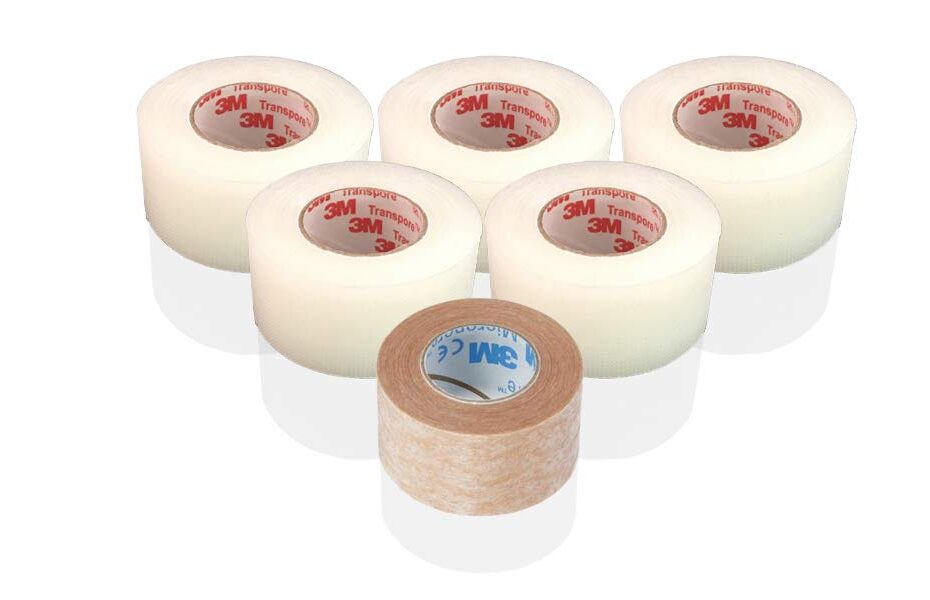Surgical tapes are essential medical products used for wound closure and care in various healthcare settings. They provide a simple yet effective method for securing dressings, closing wounds, and promoting healing. Surgical tapes come in a variety of types, sizes, and materials, each designed for specific wound closure and care needs. In this comprehensive guide, we will explore the role of surgical tapes in wound closure and care, including their types, uses, and best practices.
Understanding Surgical Tapes
1. Description:
- Surgical tapes are adhesive tapes used to secure dressings, close wounds, and provide support to injured or surgical sites.
- They are available in various sizes, shapes, and materials to suit different wound types and locations.
2. Components:
- Surgical tapes consist of an adhesive backing and a non-adhesive or fabric backing.
- The adhesive backing adheres to the skin, while the non-adhesive or fabric backing provides support and protection to the wound.
3. Types:
- There are several types of surgical tapes available, including:
- Cloth tape
- Paper tape
- Transparent film tape
- Silicone tape
- Waterproof tape
Types of Surgical Tapes
1. Cloth Tape:
- Description: Cloth tape, also known as medical tape or adhesive tape, is made of a fabric material that is durable and breathable.
- Uses: Cloth tape is commonly used for securing dressings, bandages, and medical devices to the skin.
- Benefits: Cloth tape is flexible, conformable, and gentle on the skin, making it suitable for use on sensitive or fragile skin.
2. Paper Tape:
- Description: Paper tape is made of a thin, lightweight paper material with a hypoallergenic adhesive backing.
- Uses: Paper tape is commonly used for securing dressings, wound closures, and immobilizing splints.
- Benefits: Paper tape is gentle on the skin, breathable, and easy to tear, making it ideal for use on delicate or sensitive areas.
3. Transparent Film Tape:
- Description: Transparent film tape is made of a thin, transparent film material with a waterproof adhesive backing.
- Uses: Transparent film tape is commonly used for securing dressings, IV catheters, and other medical devices to the skin.
- Benefits: Transparent film tape is waterproof, breathable, and provides a barrier against moisture and bacteria, helping to prevent infection.
4. Silicone Tape:
- Description: Silicone tape is made of a soft, flexible silicone material with a gentle adhesive backing.
- Uses: Silicone tape is commonly used for securing dressings, wound closures, and scar management.
- Benefits: Silicone tape is gentle on the skin, hypoallergenic, and can be repositioned and removed without causing trauma to the skin.
5. Waterproof Tape:
- Description: Waterproof tape is made of a durable, waterproof material with a strong adhesive backing.
- Uses: Waterproof tape is commonly used for securing dressings and medical devices in wet or humid environments.
- Benefits: Waterproof tape is resistant to water, sweat, and moisture, providing secure and long-lasting adhesion in challenging conditions.
Uses of Surgical Tapes
Surgical tapes have a wide range of uses in wound closure and care, including:
1. Securing Dressings:
- Surgical tapes are used to secure dressings and bandages to the skin, providing protection and support to the wound.
- They help prevent contamination, reduce the risk of infection, and promote healing.
2. Wound Closure:
- Surgical tapes are used to close wounds and lacerations that do not require stitches or sutures.
- They help hold the edges of the wound together, promoting healing and reducing the risk of infection.
3. Immobilizing Splints:
- Surgical tapes are used to immobilize splints and other medical devices, providing support and stability to injured or surgical sites.
- They help prevent movement and promote healing in immobilized areas.
4. Securing Medical Devices:
- Surgical tapes are used to secure IV catheters, tubing, and other medical devices to the skin.
- They help prevent dislodgment, ensure proper placement, and reduce the risk of complications.
5. Scar Management:
- Surgical tapes are used in scar management to provide support and compression to healing wounds.
- They help flatten and soften scars, reduce redness and inflammation, and improve the overall appearance of the scar.
Best Practices for Using Surgical Tapes
To ensure the effective use of surgical tapes in wound closure and care, it is important to follow best practices:
1. Prepare the Skin:
- Clean the skin with mild soap and water to remove dirt and debris.
- Pat the skin dry with a clean cloth or gauze before applying surgical tape.
2. Choose the Right Tape:
- Select the appropriate type and size of surgical tape for the wound type and location.
- Consider factors such as adhesion, flexibility, and breathability when choosing surgical tape.
3. Apply the Tape Properly:
- Cut the tape to the desired length using scissors or a tape dispenser.
- Apply the tape evenly and smoothly to the skin, ensuring that it adheres securely to the wound edges.
4. Remove the Tape Carefully:
- To remove surgical tape, gently lift one edge and pull it away from the skin in the direction of hair growth.
- Avoid pulling the tape off quickly, as this can cause trauma to the skin and increase the risk of injury.
5. Monitor the Wound:
- Check the wound regularly for signs of infection, such as redness, swelling, or drainage.
- Replace the surgical tape if it becomes loose, dirty, or wet.
Conclusion
Surgical tapes play a vital role in wound closure and care, providing a simple yet effective method for securing dressings, closing wounds, and promoting healing. With a variety of types and uses, surgical tapes are versatile medical products used in various healthcare settings, including hospitals, clinics, and home care settings. By understanding the different types, uses, and best practices for using surgical tapes, healthcare professionals and individuals alike can ensure the effective closure and care of wounds, promoting faster healing and reducing the risk of complications.
